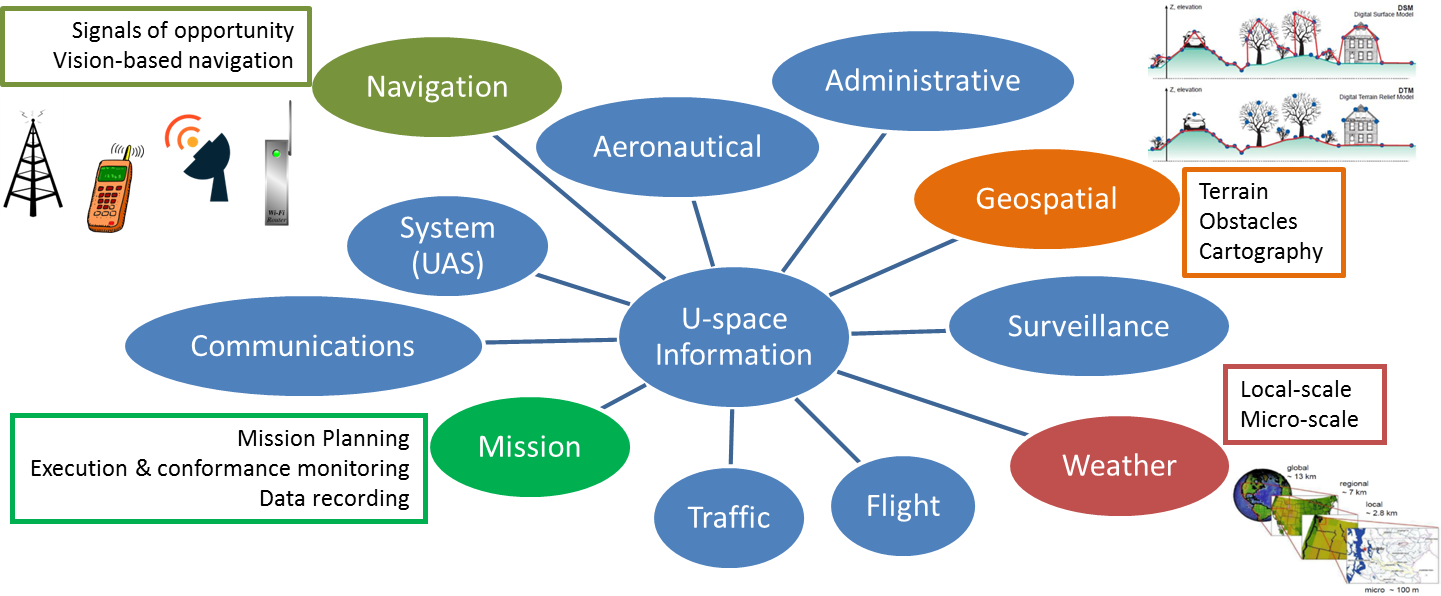SESAR is making progress on the development U-space, the European framework for safe and drone operations in very low-level airspace. The SESAR IMPETUS project is investigating and testing information management solutions for U-space. The partners have published some initial findings about technologically and commercially feasible solutions and some of the challenges that need to be addressed.
Fidelity is key
Initially the project identified the information needs of drone users by reviewing the entire drone operational lifecycle, starting with mission and individual flight planning, continuing via traffic planning, mission and flight execution, and ending with the end customer who receives the service. A key takeaway of this review was that many of the big differences between ATM and U-space have to do mainly with scale aspects. Drone information services will be significantly more detailed, diverse and dynamic. Safety critical information, for instance, will be needed at a much higher fidelity than in today’s solutions, such as geospatial information services to ensure surface clearance, local weather information to calculate drone trajectory uncertainties and non-conventional navigation sources (such as signals of opportunity and vision-based navigation) to allow for more precise navigation on a local scale.
The ‘microservice’-solution
Services of this level of fidelity will require the movement and provision of massive amounts of data to a wide array of users spread out over a large geographical area. Considering these points we have found that an information management architecture based on the microservices paradigm would likely be the best solution for drones. This paradigm is a design concept for organizing an application more efficiently. Legacy “monolithical” applications (meaning centralised, uniformly packaged and single-language-based programs) quickly reach overwhelming complexity as they grow to meet increasing consumer demand. Microservice-based applications avoid this issue, as the entire application is split into small, independent but highly interconnected services. Several key benefits are expected through such an implementation:
- Flexible and rapid updates, making continuous deployment of the service possible.
- Agile exchanges between functions, thanks to the use of efficient APIs exchanging data using simple message formats.
- Availability of data for each micro-service due to de-centralised data management.
- The entire system can be easily scaled to meet consumer demands.
Showcase experiments
With these insights in mind, IMPETUS will now replicate several aspects of this architecture to evaluate whether it can meet some of the challenges that the team has identified for the U-space system. For instance, one experiment will explore how a drone deconfliction service can interact with other services in the system to maximise the airspace capacity for drones based on dynamic volumes. Such dynamicity would greatly improve airspace utilisation, however at the price of higher complexity in air traffic management solutions and capabilities of UAS operating in such airspace. IMPETUS aims to demonstrate that such a feat is not only technologically possible, but also a viable option when realised in coordination and conjunction between services. This approach fully supports U-space objectives of flexibility, availability and scalability, and is an enabler of high-density operations requiring agile responses and adaptability to changes in number of clients.
Once the service interactions are tested, the team will summarise its findings in a final report and provide a consolidated list of requirements, which will serve as a reference to the implementation of the final U-space architecture.
This SESAR project has received funding from the European Union's Horizon 2020 research and innovation programme under grant agreement No 763807.

